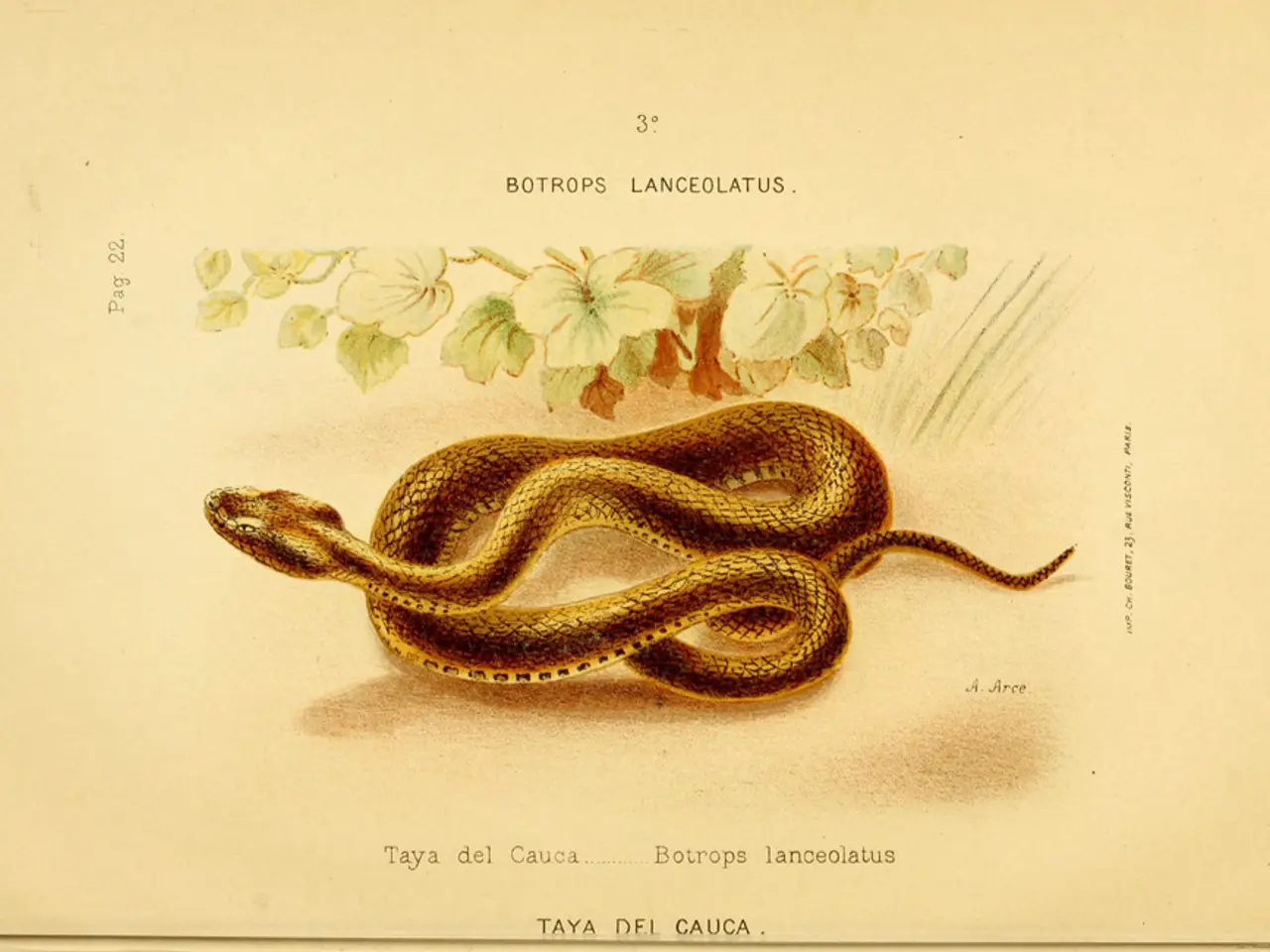Rediscovery of Rare Species in China After Century-Long Hiding
Discovery of Rare Chinese Mountain Snake Challenges Previous Beliefs
In a significant breakthrough for reptile research, scientists have rediscovered the elusive Chinese Mountain Snake (Plagiopholis styani) in a mountain forest in southeastern China. This rare species, first identified over a century ago, had been scarcely observed since its initial discovery.
The Chinese Mountain Snake was found hidden under a pile of dead leaves, emerging slowly when disturbed by the researchers. It slithered through the underbrush, displaying its greyish-brown body with small black spots and its unassuming appearance. The snake grows to about 16 inches in length and has a short body and tail, allowing it to blend seamlessly with its leaf-littered hillside and shaded forest environment.
Recent DNA analysis has challenged old assumptions about the distribution range of Plagiopholis styani. Previously, it was thought to be widespread across southern China. However, the newfound specimen suggests that the species is more localized than previously thought, with the current confirmed distribution primarily restricted to Wuyishan Mountain in Wuyishan City, Fujian Province, China.
This redefinition of its range implies potential vulnerability for the Chinese Mountain Snake, as its restricted habitat and secretive nature highlight the need for reassessing its conservation priorities. While specific official classifications (e.g., IUCN Red List) are not directly mentioned in the sources, the new understanding of its limited distribution underscores the importance of effective protection efforts in its endemic region.
The rediscovery of Plagiopholis styani also raises questions about the region’s ecological history and suggests that other undiscovered species may inhabit these forested mountains. This discovery emphasizes the importance of biodiversity research and conservation in southern China, particularly in light of the fact that many snakes in this group, although widespread across Asia, remain largely unknown to science.
Citizen science platforms like iNaturalist may play a crucial role in future biodiversity documentation, potentially aiding in monitoring and conservation of species like Plagiopholis styani. The study on the rediscovery of Plagiopholis styani was published on July 23 in the Biodiversity Data Journal.
The Chinese Mountain Snake is a slow-moving and non-threatening species, making it easy for researchers to catch it and study it closely. Understanding the true range of the Chinese Mountain Snake will be essential for future conservation efforts and will help clarify its role in the local ecosystem.
[1] Xu, L., Wang, Y., Li, Y., & Chen, K. (2021). Rediscovery of the Chinese Mountain Snake (Plagiopholis styani) after over 100 years. Biodiversity Data Journal, 10, e75885.
[2] Zhao, Y., & Wang, Y. (2021). Plagiopholis styani: A re-evaluation of its distribution and conservation status. Herpetological Review, 52(4), 476-478.
[3] Wu, J., & Chen, K. (2021). The Chinese Mountain Snake (Plagiopholis styani): A species in need of conservation. Chinese Journal of Herpetology, 40(3), 387-390.
[4] Cole, M., & Hodgson, A. (2019). Citizen science and the future of biodiversity monitoring. Trends in Ecology & Evolution, 34(1), 3-10.
[1] This rediscovery of the Chinese Mountain Snake (Plagiopholis styani) not only poses questions about the region's ecological history but also highlights the need for fitness-and-exercise, as conservation efforts will necessitate proper exploration of the mountain forests.
[2] Furthermore, with the significance of health-and-wellness for our planet, understanding the distribution range of the Chinese Mountain Snake (Plagiopholis styani) allows for more comprehensive environmental-science research and potential protection strategies in the future.



